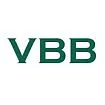- within International Law topic(s)
- with Finance and Tax Executives and Inhouse Counsel
- in United States
- with readers working within the Banking & Credit, Healthcare and Media & Information industries
On 4 February 2014, the Brussels Court of Appeal (Hof van Beroep/Cour d'Appel) (the "Court") refused registration of the colour yellow as a trade mark for Telenet's "triple play" services. In its judgment, the Court applied the principles governing colour marks established by the Court of Justice of the European Union in its Libertel judgment of 6 May 2003 (Case C-104/01).
The Court recalled that the grounds for refusing registration must be interpreted in light of the public interest. To the extent that undistorted competition is of public interest, free and fair competition may take preference over the registration of an exclusive and perpetually renewable trade mark right.
The Court added that the distinctiveness requirement serves to identify the commercial origin of the goods. It will therefore be necessary to determine whether or not colours are capable of conveying specific information, in particular as to the origin of a product or service.
If in a specific case a colour as such does not initially have any distinctive character, it may acquire such a character after the normal process of familiarising the relevant public has taken place. The Court found that, although the colour yellow had been used by Telenet for its "triple play" services since 2008, this fact was not sufficient.
Furthermore, the Court reasoned that in the case of a colour per se, distinctiveness without any prior use is inconceivable, save in exceptional circumstances, and particularly if the number of goods or services for which the mark is claimed is very limited and the relevant market very specific. As regards Telenet's case, the Court held that "triple play" services could not be regarded as very limited services since they encompass almost the totality of the services of a telecommunications operator. The Court then focused on the relevant markets. It held that the "triple play" services do not form a single and distinct market. However, the Court chose not to take a final position on the relevant markets and decided that, regardless of the definition of these markets, telecommunications services are aimed at the general public in its broadest meaning. As such, the relevant markets lacked specificity.
As a consequence, the Court held that the exclusive trade mark rights in the colour yellow would constitute an unjustified restriction of this colour for the other operators offering services of the type for which registration is sought. It added that although the use of a 'homemade' signature colour by numerous telecommunications operators is a market reality, this does not necessarily mean that the operators may deny one another access to a specific colour on grounds relating to trade mark law and, consequently, create an additional entry barrier in a market which appears to attract few entrants.
The content of this article is intended to provide a general guide to the subject matter. Specialist advice should be sought about your specific circumstances.

